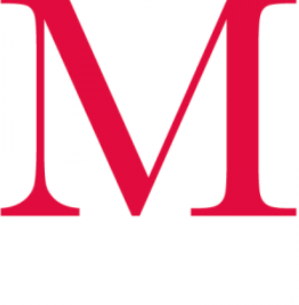As a necessary part of student life, the DiMenna-Nyselius Library must be kept as up-to-date as possible in order to keep up with the needs of students. In fact, this past summer, multiple changes were made in order to modernize the library for the 21st century scholar.
Dean of Libraries and University Librarian Brent Mai commented, “The changes made during the summer of 2017 are part of a several-phased process designed to make better use of the physical space of the library to support student academic success.”
According to Mai, some of these changes include that most of the print and microform journal titles were duplicated by commercially digitized collections. As it was found that about 75 percent of the collection could be removed from the library without decreasing access to the content of the journals, thanks to digitized versions, many of the print and microform copies were withdrawn from the library.
In addition to this, “the curriculum collection on the lower level was thoroughly evaluated for currency and curricular support,” said Mai. “Much of it, woefully dated and some even discredited by educators, was withdrawn.”
The remaining curriculum books were relocated to the main level of the library. Mai explained that there are plans to obtain updated materials for the collection and to move it to the upper level once there is enough space there.
Using the space made available from the removals and relocations, other library materials were able to be stored in the lower level.
Approximately 90,000 volumes are in the process of being moved from the upper level to the lower level, based upon how often they are checked out, and whether or not they are considered dated, according to Mai. This is on track to be completed by the end of the fall semester.
Mai explained that much of the reference collection has either been recycled or moved to a different section to provide more space.
“The University Libraries’ Reference Team spent the summer reviewing the entire reference collection for currency, curricular support and duplication with resources available electronically,” said Mai.
Senior Thomas Mitsch believes that it is a good idea to have resources mostly online.
“I think it’s solid putting everything online because it makes it easier to find because then you can just look for it,” said Mitsch. “They definitely should make it more known that some of the stuff is on there.”
According to Mitsch, “having more space is always solid.”
Thanks to the additional space, new furniture has been added to the library. According to Mai, there are 40 new student seats in the library.
“The increasing student population and students’ changing academic support needs are the main drivers of our efforts to find additional spaces for student academic support in the library building,” Mai commented.
On the same note, due to student requests, four new reservable collaboration spaces have been created in Rooms 312 and 314. In addition to this, two temporary offices on the lower level have become reservable collaboration spaces, and the Collaboratory “pods” on the lower level have also been made reservable.
There is now a total of 25 student reservable collaboration spaces.
In addition to these changes, new lighting has been added to the area above the St. John’s Bible display cases on the lower level and on both sides of the stairs on the lower level.
The locations of the Graduate Student Study Lounge and the Writing Center have switched, the Graduate Student Study Lounge is now in Room 107 instead of 115 and the Writing Center is now in Room 115 instead of 107.
“I think the new space is great,” said Writing Center tutor Rachel Carlowicz ‘18. “It is nice to have an actual room that is secluded so that we can have appointments and not feel like we are interrupting others working in the library and make the students who come feel more comfortable.”
“Tutoring can happen in a more private setting,” Carlowicz continued. “It is also nice to have white boards, comfy chairs and a variety of table sizes to work at because it allows for a more diverse and comfortable approach to tutoring. I think it will be great for students and I hope more people will be welcomed into the space and use it to their advantage.”
Furniture configurations are still being worked out for the Graduate Student Study Lounge, as well as other “new spaces” in the library, according to Mai.
“The seating configurations created during this past summer are intended to be temporary, and these spaces will be incorporated into the larger discussions of space use that will continue throughout this year,” Mai added.
“The University Libraries Assessment Team conducted a number of user studies with students during the 2016-17 Academic Year that included space use, types of furniture, lighting, technology, access to electrical outlets, food concessions, etc.,” Mai continued. “The results of those studies are being used to inform these discussions.”
Additionally, a Student Library Advisory Board has been created for consultation regarding the use of newly available space in the library.


Leave a Reply